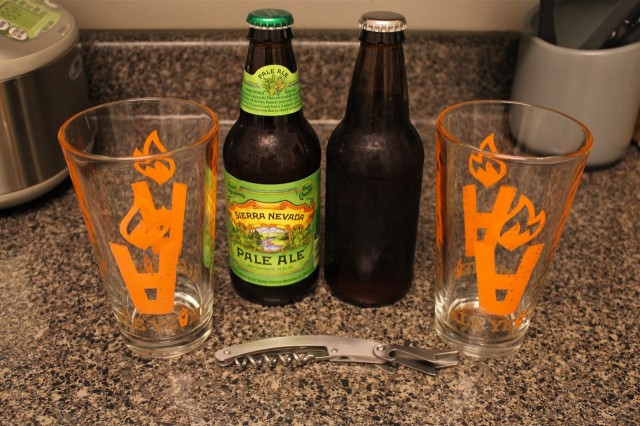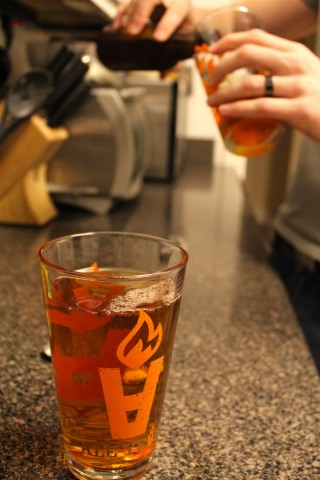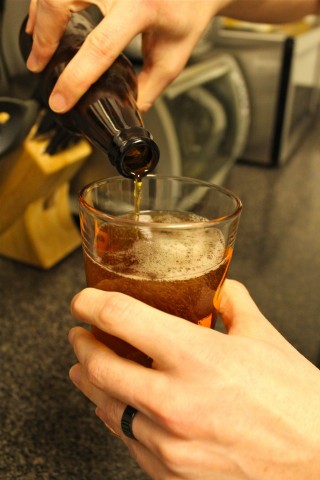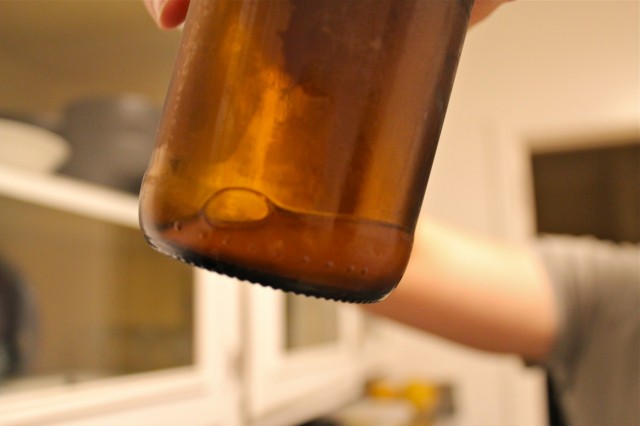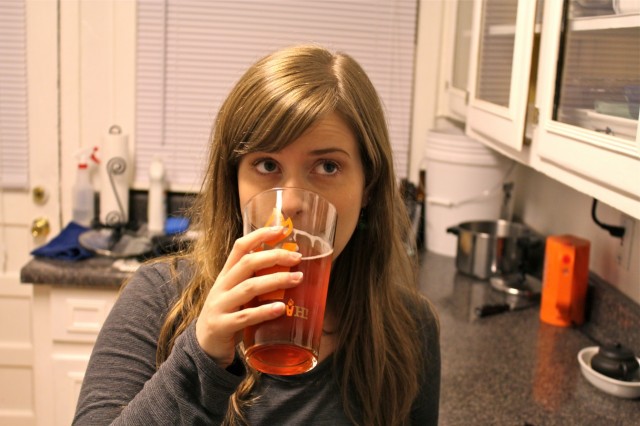As you may recall, I got Jeff a home beer brewing kit for Christmas. It didn’t include everything we’d need to get started though, so Jeff has spent the last few weeks diligently studying the beer making process to figure what else we’d need in order to make our first batch. Saturday was the day.
We got up late and didn’t get started until around 1:30, after we had time to have lunch and then clean the kitchen thoroughly to make room for all the stuff that goes along with beer making.
First, you have to clean everything that will come in contact with the wort (the unfermented beer.) Then, you have to sanitize all that stuff too. The number one way you can screw up a perfectly good batch of beer is to introduce it to any rogue bacteria, so you have to make extra sure that every inch of every thing is sanitized completely and properly.
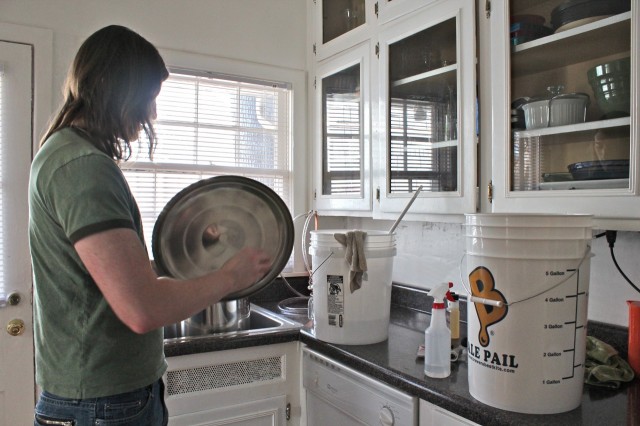
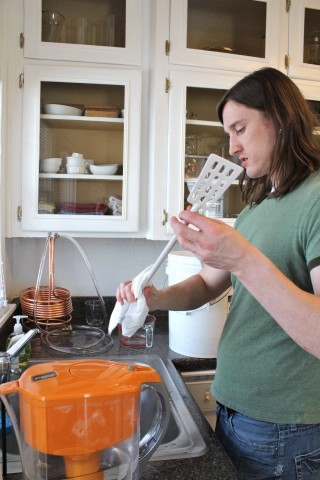
We also had to assemble the kettle by screwing in the thermometer and draining spigot. The pot was so big that we had to position it over two stove eyes!
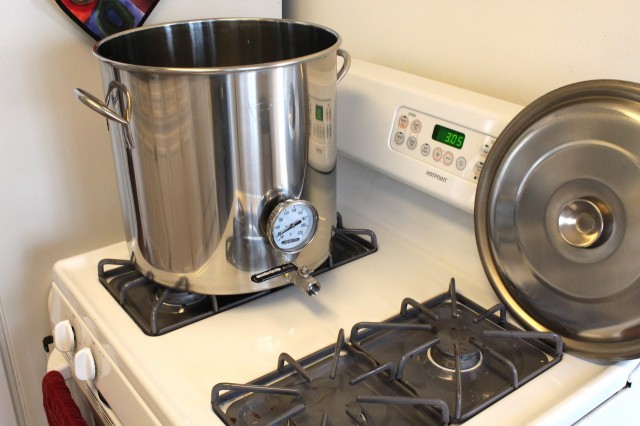
I then spent the next hour slowly filtering 6 gallons of water through our Brita pitcher to use for brewing. Next time we’ll by pre-filtered water cuz that was a major pain.
The water takes a little over an hour to come up to temperature, at which point it’s time to start steeping the grain. The grain gets poured into a muslin cloth and then gets steeped like a giant tea bag in the hot water. We tied it to one of the handles to keep it from scorching on the bottom of the pot.
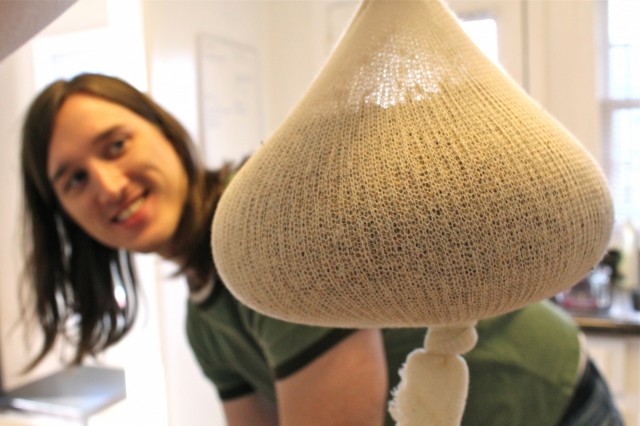
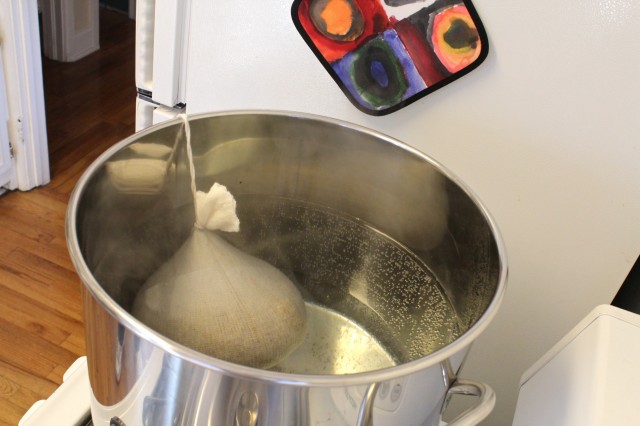
Next, you add the malt extract. It’s super thick and gloopy and you have to stir continuously to keep it from burning on the bottom of the pot since it’s mostly sugar.
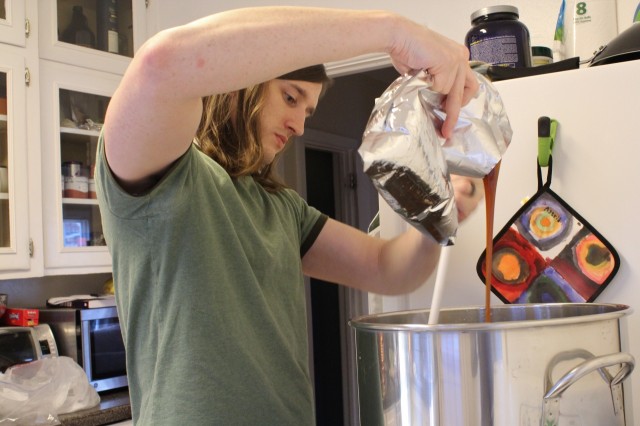
Now you wait for the “hot break.” Normally this would be signified but a tumultuous frothy boil, but ours was much more subdued because we used a malt extract that has already reached it’s hot break when it was made.
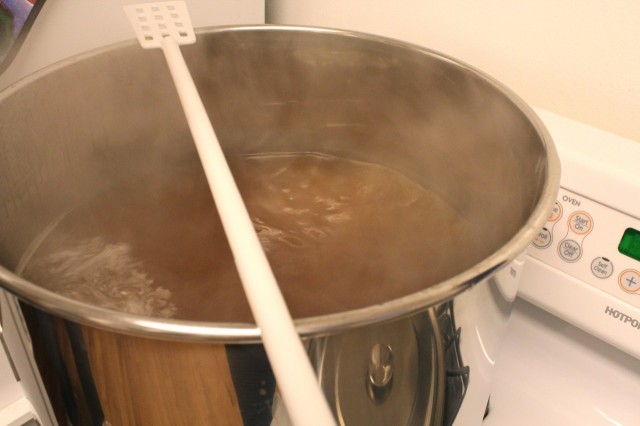
Then you add the hops. The pale ale we were making has hops added in three stages, so we added hops every 30 minutes.
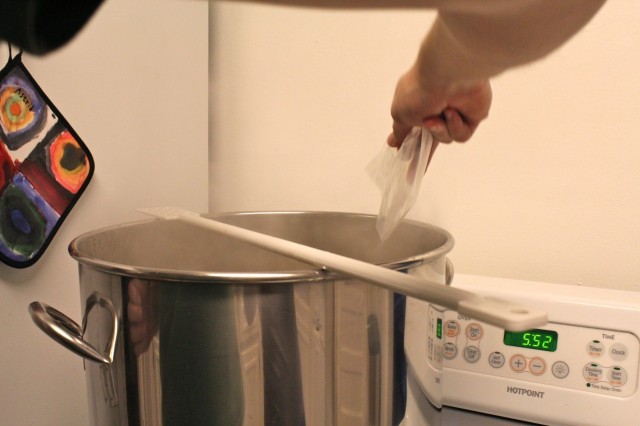
While you add the hops, you can start getting your yeast ready. We microwaved some water and let it come down to the correct temperature before tossing in the dry yeast to wake them up.
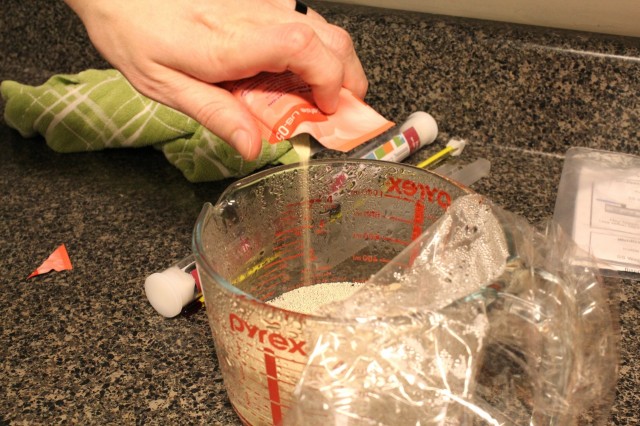
It’ll eventually look like this…
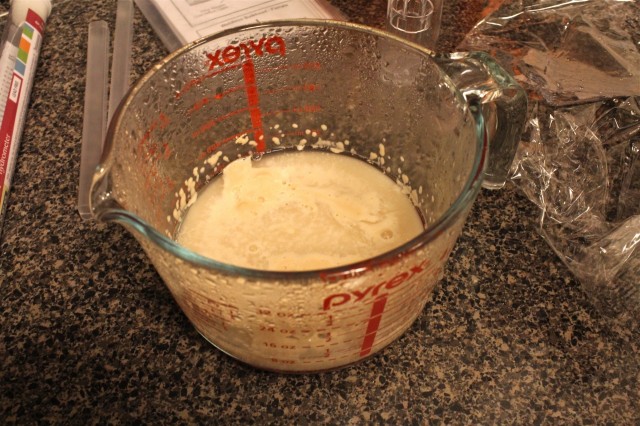
Before you can add the yeast, you need to cool down the wort to a safe temperature. There are many ways to do this, but the key is to do it as quickly as possible to limit the amount of time the wort is exposed to the air while at a temperature that bacteria can thrive.
We used a wort chiller, which is a big coiled up length of copper tubing that you run cold water through. It brings down the temperature lightning fast in the beginning and then it kind of crawls the last 20 degrees down over the course of 20 to 30 minutes, still faster than just letting it sit to cool off though.
Because our sink faucet doesn’t have a threaded nozzle to allow you to hook the wort chiller directly to it and then drain directly back into the sink, we had to run water from a garden hose instead and catch the used water in a bucket to pour out.
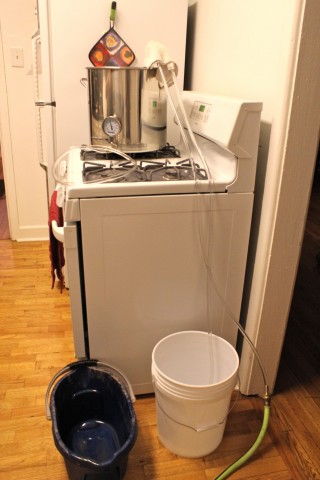
It was madness for half an hour carefully watching that the bucket doesn’t overflow and transferring the hose to another bucket temporarily while we poured the first one out. Non-stop manual labor.
Finally, the wort measured under 80 degrees so we could stop the chilling process. We drained it into the fermenting bucket and added a bit more boiling water to get it to the correct quantity of liquid.
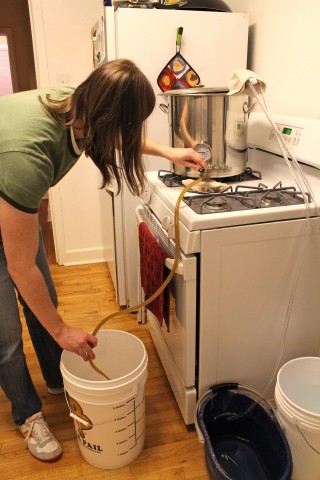
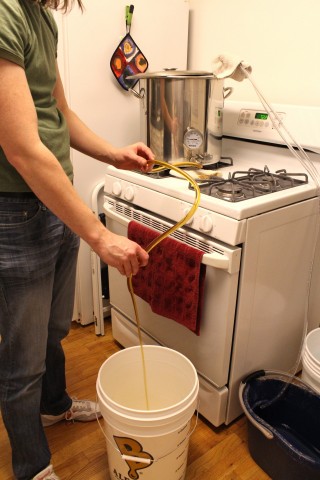
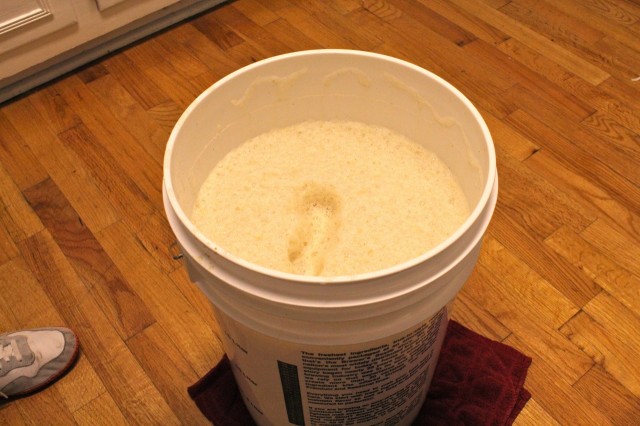
Now, you clamp on the lid and shake the crap out of it to aerate it. Then, you “pitch” the yeast, which basically just means to pour it in.
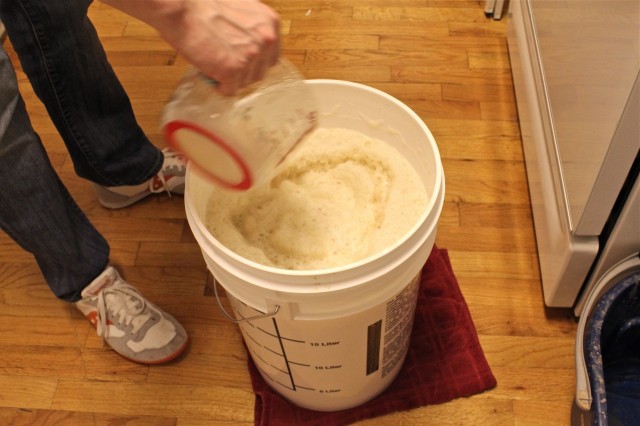
You put on the lid tightly and insert an airlock in the lid to let the CO2 created by the yeast escape safely, otherwise you’ve just made yourself a very messy explosive. 😉 We put a bit of vodka in it as a sanitary barrier between the beer and the air.
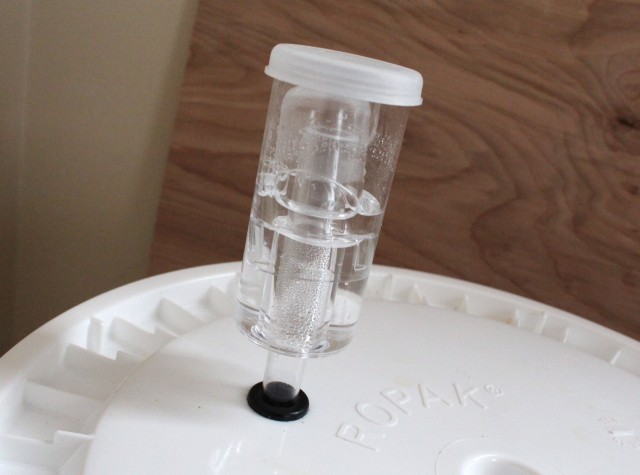
Right now it’s hanging out in our second bedroom which stays at a pretty steady and ideal temperature for beer fermenting. We know that because Jeff actually built a temperature monitoring device just for this purpose! I don’t even know how to use it but I’m still really impressed!
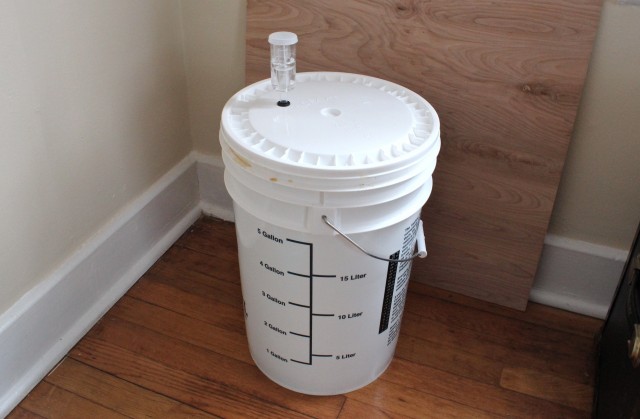
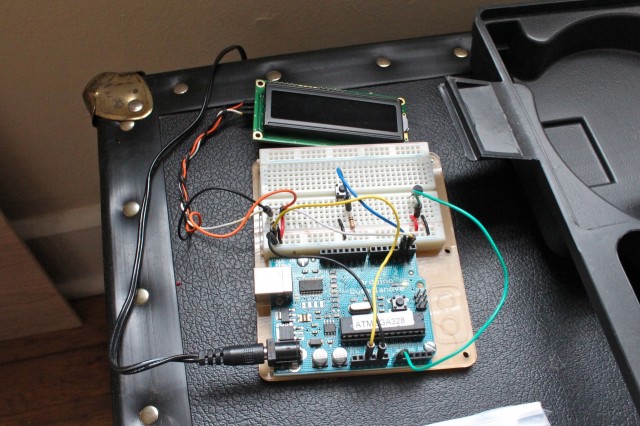
We also filled a utility bucket with water and Oxyclean to remove the labels from some bottles we’ve been saving.
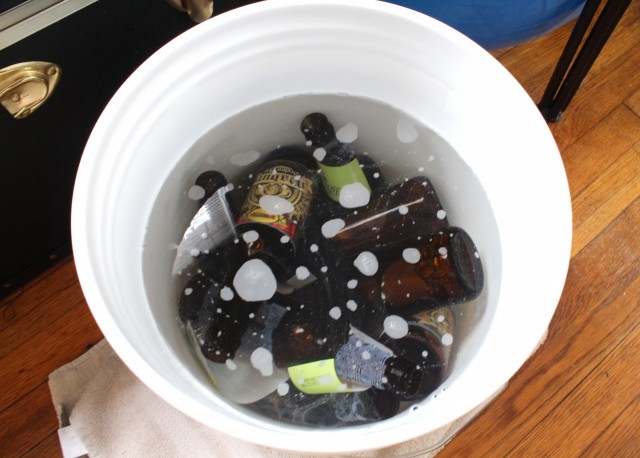
And that’s it! It’ll bubble out CO2 anywhere from overnight to 2 weeks and then you let it sit a few weeks more before bottling, then let it sit some more before drinking.
This process took nearly the whole day to complete, but already we’ve seen how we could shave off a ton of time by doing things differently. For instance, in the spring we plan to get an outdoor “turkey fryer” propane burner which will heat the same quantity of liquid in 20 minutes as opposed to over an hour. We also won’t spend and hour just filtering water!
We had a great first beer brewing experience and I can already tell that Jeff is completely hooked. I can’t wait to sample our finished product!




